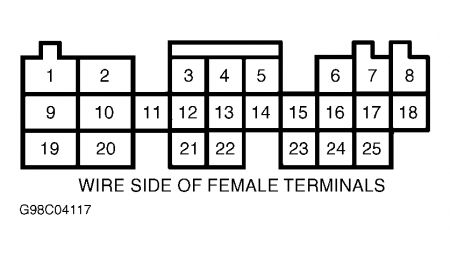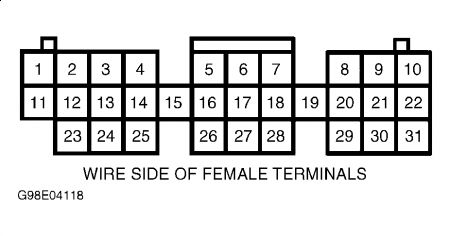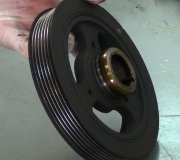Sorry for delay. Wife was in Hosp for Hip surgery and we got home yesturday.
Below is if on the code and some testing. If you feel you can do it. If not will need to take to a shop or the dealer. The problem just maybe do to the computer change and needing to do some relearning.
DTC P1259 (D16Y5 & D16Y8): VTEC PRESSURE SWITCH & SOLENOID VALVE
1.Perform PCM reset procedure. See PCM RESET PROCEDURE/CLEARING DTCS in SELF-DIAGNOSTICS - INTRODUCTION article. Start engine and run at 3000 RPM with no loads and transmission in Park or Neutral until radiator fan comes on. Road test vehicle. Accelerate in 1st gear to an engine speed of more than 3000 RPM on D16Y5 engine or more than 5000 RPM on D16Y8 engine. Hold specified engine speed for at least 2 seconds. If DTC P1259 is not repeated during first road test, repeat road test 2 more times. If DTC P1259 is indicated, go to next step. If DTC P1259 is not indicated, problem is intermittent. System is okay at this time. Check for poor connections or loose wires at VTEC pressure switch, VTEC solenoid valve and PCM connectors. See appropriate wiring diagram in WIRING DIAGRAMS article. Repair as necessary.
2.Turn ignition off. Disconnect VTEC pressure switch 2-pin connector. Check for continuity between VTEC pressure switch terminals. If continuity exists, go to next step. If continuity does not exist, replace VTEC pressure switch.
3.Turn ignition on. Check voltage between ground and VTEC pressure switch harness connector terminal No. 1 (Blue/Black wire). If battery voltage exists, go to next step. If battery voltage does not exist, check for open or short in Blue/Black wire between VTEC pressure switch and PCM 31-pin connector "C" terminal No. 10. See Fig. 3 . See appropriate wiring diagram in WIRING DIAGRAMS article. Repair as necessary. If wire is okay, substitute a known-good PCM and recheck. If symptom or problem goes away, replace original PCM.
4.Measure voltage between VTEC pressure switch harness connector terminals. If battery voltage exists, go to next step. If battery voltage does not exist, check for open in Black wire between VTEC pressure switch and ground connector located at thermostat housing except Continuously Variable Transmission (CVT) or right front of engine, below air cleaner box CVT. See appropriate wiring diagram in WIRING DIAGRAMS article. If wires are okay, substitute a known-good PCM and recheck. If symptom or problem goes away, replace original PCM. See appropriate wiring diagram in WIRING DIAGRAMS article.
5.Turn ignition off. Disconnect VTEC solenoid valve connector. Check for resistance between ground and VTEC solenoid valve terminal. If resistance is 14-30 ohms, go to next step. If resistance is not 14-30 ohms replace VTEC solenoid valve.
6.Remove VTEC pressure switch. Install Pressure Gauge Adaptor (07NAJ-P07010A) and A/T Low Pressure Gauge (07406-0070300). Install pressure switch into adaptor. Reconnect all connectors. Connect tachometer. Start engine and run with no loads and transmission in Park or Neutral until radiator fan comes on. Allow engine to idle. Because engine is running with no load, oil pressure must be checked within one minute. Check oil pressure at engine speeds of 1000 and 3000 RPM on D16Y5 engine or 1000, 3000 and 5000 RPM on D16Y8 engine. If oil pressure is less than 7 psi, go to next step. If oil pressure is 7 psi or more, check VTEC solenoid valve. See VTEC SOLENOID VALVE under RELAYS & SOLENOIDS in SYSTEM & COMPONENT TESTING article.
7.Turn ignition off. Disconnect VTEC solenoid valve connector. Using a fused jumper wire, attach battery voltage to VTEC solenoid valve terminal. Start engine and check oil pressure at 3000 RPM on D16Y5 or 5000 RPM on D16Y8. If oil pressure is more than 36 psi on D16Y5 or 57 psi on D16Y8, go to next step. If oil pressure is not more than specified, check VTEC solenoid valve. See VTEC SOLENOID VALVE under RELAYS & SOLENOIDS in SYSTEM & COMPONENT TESTING article.
8.Battery voltage should still be connected to VTEC solenoid valve. Using backprobe set, measure voltage between ground and PCM 31-pin connector "C" terminal No. 10 (Blue/Black wire). See Fig. 3 . If battery voltage exists at more than 3000 RPM on D16Y5 or 5000 RPM on D16Y8, go to next step. If battery voltage does not exist at more than specified 3000 RPM on D16Y5 or 5000 RPM on D16Y8, replace VTEC pressure switch.
9.Turn ignition off. Disconnect battery voltage from VTEC solenoid valve. Using backprobe set, check for continuity in Green/Yellow wire between VTEC solenoid valve connector terminal and PCM 25-pin connector "B" terminal No. 12. See Fig. 2 . If continuity exists, go to next step. If continuity does not exist, check for open in Green/Yellow wire between VTEC solenoid valve connector terminal and PCM 25-pin connector "B". See appropriate wiring diagram in WIRING DIAGRAMS article.
10.Check for continuity between ground and VTEC solenoid valve terminal. If continuity exists, check for short in Green/Yellow wire between VTEC solenoid valve connector terminal and PCM 25-pin connector "B". See appropriate wiring diagram in WIRING DIAGRAMS article. If continuity does not exist, substitute a known-good PCM and recheck. If symptom or problem goes away, replace original PCM. See appropriate wiring diagram in WIRING DIAGRAMS article.
Fig. 2: Identifying ECM/PCM 25-Pin Harness Connector "B" Terminals

Fig. 3: Identifying ECM/PCM 31-Pin Harness Connector "C" Terminals

.
Saturday, January 30th, 2010 AT 8:00 PM




